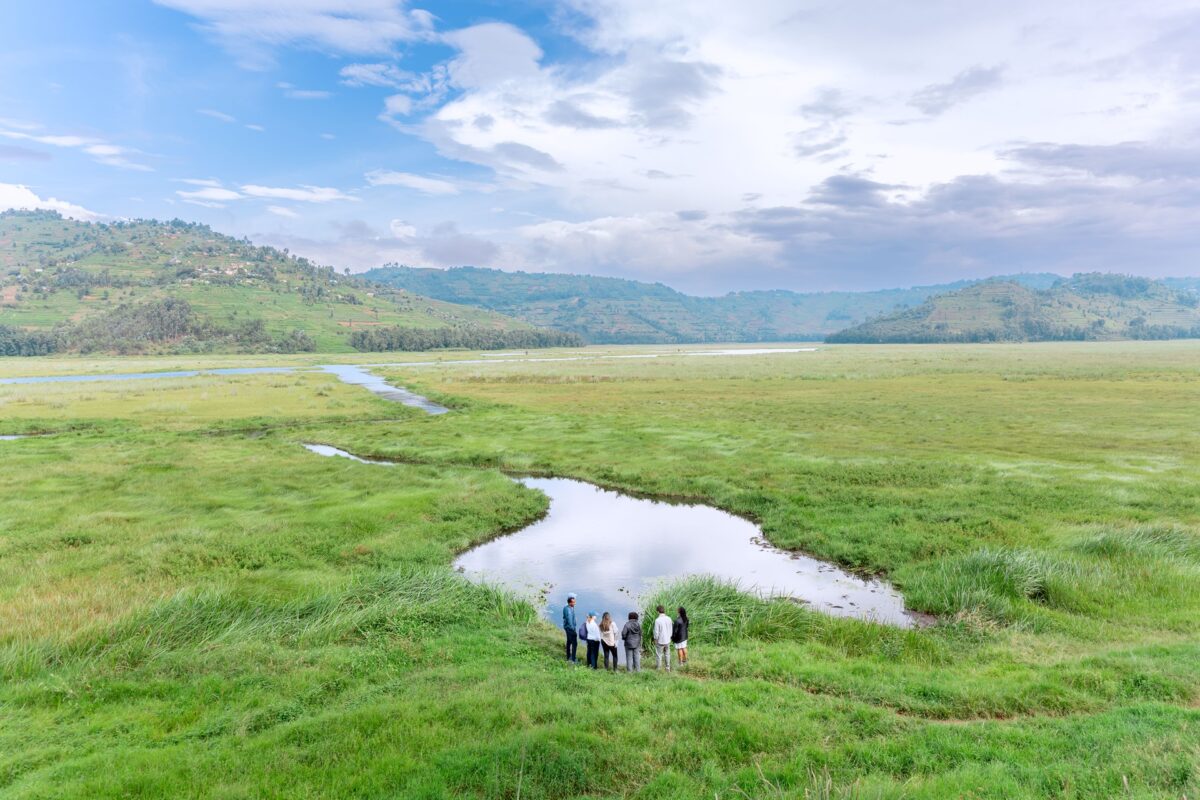Last month JRS embarked on a collaborative partnership with Tusk Trust, building on a successful JRS funded 2024 Tusk conservation symposium in Rwanda. Through strategic grants to dynamic implementers, support will provide field partners with essential resources including equipment, training, mentoring, and collaborative biodiversity data exchange opportunities. Four 12-month JRS capacity-building grants will be administered by Tusk’s experienced Programs team, who will provide implementation guidance to partner organizations to plan, train, initiate, or enhance their field data collection, analytics, information management, and reporting capabilities to strengthen conservation strategies in regions of critical biodiversity.
JRS has identified the four following projects based in Comoros, Democratic Republic of Congo, Gabon and Kenya working in the areas of biodiversity, conservation and environmental sustainability:
Dahari (Comoros)
Summary: Dahari’s forest programme works to restore the forests of the islands of Anjouan and Grande Comore in the Comoros archipelago to ensure the conservation of endemic biodiversity and the maintenance of watershed services for local people. The Comoros have suffered from one of the highest deforestation rates in the world in the past fifty years, with Anjouan losing 80% of its natural forests between 1995 and 2014. In the Moya forest Key Biodiversity Area (KBA) on Anjouan Dahari is piloting a locally-adapted conservation agreements programme with 40 farmers who have put their upland fields into fallow in order to conserve and restore natural forest. Funding will continue and evaluate the impact of the scheme on deforestation using satellite imagery (in association with academics from the University of Oxford), and will assess the impact of the scheme on water provisioning services as well as to identify critical hydrological areas together with experts from Kings College London. This information will be combined with existing data including multi-taxa biodiversity assessments and detailed analyses of the ecological needs of the Critically Endangered Livingstone’s fruit bat to prioritize forest areas to conserve and restore. The results of the work will feed directly into discussions about conservation priorities with farmers in both KBAs, and will be disseminated to national stakeholders.
Friends of Bonobos (Dem. Rep. of Congo)
Summary: The Congo River Basin is the world’s second largest freshwater basin and a global center of biodiversity. The Cuvette Central, a low elevation peatland/rainforest mosaic, is one of the most diverse ecoregions within the basin. It harbors many endemic species, among them the threatened bonobo (Pan paniscus), one of our closest relatives. In an effort to protect this species from extinction and reintroduce individuals rescued from poaching and rehabilitated at Lola ya Bonobo Sanctuary, the Ekolo ya Bonobo Community Reserve (EBCR) was established by Congolese organization Les Amis des Bonobo du Congo (ABC) near the town of Basankusu. The reserve extends over 47,500 hectares (~117,000 acres (and growing) of lowland rainforest, including aquatic ecosystems such as extensive peatlands, swamps, and complex river networks. However, little is known about the overall taxonomic diversity present in the reserve, especially its freshwater fish diversity and abundance. This proposal seeks support for new areas of biodiversity data collection as a basis for long-term monitoring. Support will also support capacity-building to ensure the local team has adequate resources to effectively collect, record, and process data.
OLEO (Gabon)
Summary: OELO is a Gabonese NGO with a mission to conserve biodiversity and ensure ecosystem services in the Bas Ogooué lake region by mobilizing and supporting local communities. Support will train local data collectors from lakes Adolet, Ezanga, Gomé and Onangué through a 5-day workshop in Lambaréné, Gabon, with existing data collectors from Oguemoué cooperatives and technical partner Aquatic Ecosystem Services (AES), administrative partners (DGPA and DGEA) and local students. The OELO field team will expand community-led data collection into lakes Adolet, Ezanga, Gomé, and Onangué to gather baseline data to inform future fisheries management plans. A key output will be the creation of a common web-based platform to share data, making it readily accessible for all partners.
The Pangolin Project (Kenya)
Summary: The goal of this project is to Establish a biodiversity centre of excellence in the Nyekweri Ecosystem, which lies to the west of the Maasai Mara National Reserve (MMNR) within the Greater Mara Ecosystem (GME). It is a remnant Congo-Guinean forest mosaic of hardwood species interspersed with savannah glades. The area is highly fertile and receives over 1600mm of rainfall a year. It is the watershed for the Migoris River that serves over 1 million people in western Kenya and supports microclimates and rainfall generation for the savannah of the Greater Mara and Serengeti Ecosystem. Despite its biodiversity value and proximity to the Maasai Mara National Reserve, the Nyekweri Ecosystem was never gazetted for protection. Until 2000 the forest was held under community land tenure but since then the area has been sub-divided and the last block was allocated in 2023. The area of interest – a 69,160 acre area – is now subdivided into 2170 land parcels. The project will utilize funds to expand the capacity and skills of The Pangolin Project monitoring team to better measure biodiversity across the area and the impact of conservation and restoration efforts on forest cover and overall biodiversity.
To read more about the JRS-TUSK Partnership to Support Biodiversity Monitoring Capacity for African Protected Areas and Conservation Leaders click here.

